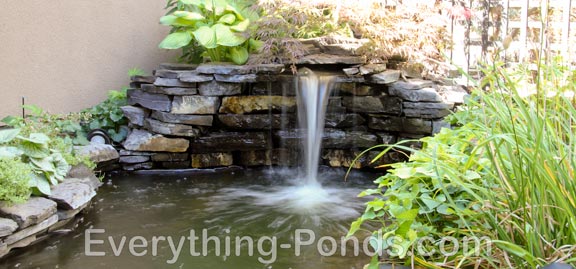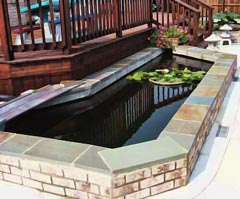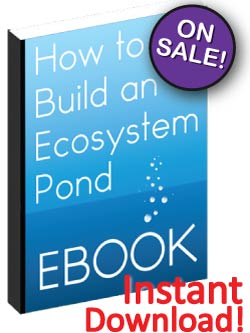Pond Designs - Adding a Custom Flare to Your Pond Landscape
One of the most rewarding aspects of creating a custom pond is coming up with your own concepts and pond designs. When it comes to creating a design concept, the only real limit is your own imagination, so feel free to make your pond as simple, or as crazy as you like. Although there are a few popular pond themes, such as formal ponds, Koi ponds or traditional Japanese water gardens, none of these designs are set in stone, so feel free to modify and adapt these existing designs as you see fit!

Starting your Pond Design
The first step to designing your pond is to decide on a location. An ideal location will allow for easy viewing of the pond from many spots on your property, or from within occupied dwellings on the property. Although this might sound like common sense, we see it far to often where a new pond builder will build a pond in some far off corner of their yard, only to neglect it because it's out of site and out of mind. It is also important to choose a spot that makes sense with respect to other features in the landscape. For example, if you have a large tree that has a tendency to drop a lot of leaves in the fall, it's probably best not to put your pond right below to avoid clogging your filters and drains with leaves. Other spots to avoid might include areas that would receive run off water carrying debris and/or contaminants. This is especially important if you're planning on housing fish in your pond. For more information on housing fish, please read our sections on Koi Ponds, or Goldfish Ponds.
Shaping your Pond
Pond designs come in many shapes and sizes. After selecting an appropriate location, it's important to create a pond design that complements the setting surrounding the pond. For example, if the pond is to be build next to the patio of an upscale, modern house, the pond will likely be quite formal in nature, using more modern materials like brick, slate, concrete etc. As well, the shape may be more rectangular or L shaped to match the lines of the building. However, if a pond is to be built near a 'country cottage' type dwelling, or in an existing garden, the pond will likely be much more natural in appearance using natural materials like rock, soil and plants. Natural ponds generally form softer circular or kidney shapes, and may incorporate a natural looking stream or waterfall. The point is to take a good look at your location, and then come up with a pond design that will enhance and complement the natural beauty of that location.

Above or Below Ground
Some ponds are built above ground level using walls or banks to build up the sides of the pond. Pond designs like these are sometimes built purely to achieve a certain look. However, other times building a pond slightly above ground level may be a necessity due to certain site conditions. One such site condition that would require building up part of the pond would be a sloped property. In order to create a 'flat' pond on a sloped piece of land, the downhill side of the pond would have to built up with some kind of retaining wall or landscaping bank to achieve a flat enough location to build the pond. Another situation that would warrant an above ground level pond would be a site location with very little soil and high amounts of rock. Jack hammering a deep enough hole may be costly or difficult in certain situations, so it might just be easier to build up the pond a foot or two to get a little extra water depth.
How to Build a Pond
Looking for more information on building a pond, including design, choosing equipment and construction? Look no further, our complete guide entitled 'How to Build an Ecosystem Pond' will tell you everything you need to know on the topic of building an ecosystem pond.


